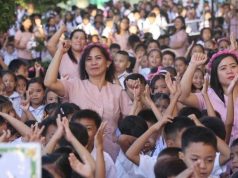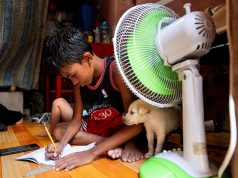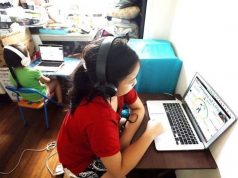Calls to suspend the academic year continued to dominate social media after students and teachers shared stories of their struggles amid the implementation of the new distance or blended learning system.
The petition through the hashtag #AcademicFreezeNOW had been the subject of dissent since the start of the strict lockdown measures last March.
However, with the decisions of the Department of Education and the Commission on Higher Education to pursue resumption of classes amid the pandemic, youth groups, students and concerned Filipinos stood by their positions to suspend them, citing economic and health concerns to the students and the teachers.
Colleges and universities have started their school year last August 24, whereas primary and secondary schools will reopen on October 5.
Online posts with the hashtag started to gain traction on Thursday, September 3 and then topped the trends list across Facebook and Twitter on Friday, September 4.
So far, it has over 128,000 tweets on Twitter alone.
Why the call for the academic freeze?
An online petition via Change.org addressed to DepEd detailed various reasons for the “academic freeze.” It already has 212,237 signatories of the target 300,000.
The petitioner named The Ruins cited the slow and unstable internet connection in the country, the additional costs for the needed Wi-Fi connection and other educational materials, and the lack of laptops and other similar devices for the remote classes.
“It may not be the best solution, but an academic freeze can be adopted until the digital divide is fully resolved or results of mass testing and curve-flattening are already evaluated empirically,” the statement read.
“This will require a flexible academic term, calendar, and curricula to lessen the school days required, lower the number of course requirements, and reduce tuition and other fees usually projected for the use of school facilities,” it added.
Some Twitter users shared screenshots of conversations from Omegle, a free online chat application, where a student resorted to selling her lewd photos to a stranger in exchange for money for her education.
The identities of the student, however, could not be determined due to the anonymity feature of the platform.
Damn! It’s very heartbreaking that some of students sells their nudes and being desperate to lose their dignity just to attend and buy their own gadgets for this online class. #AcademicFreezeNOW Don’t be so childish and selfish.
Opportunity for Student voices to be heard. pic.twitter.com/h4McrUQhtr
— 𝐀𝐧𝐧𝐞 #AcademicFreezeNow (@Doughnkeysh) September 3, 2020
Several students on Twitter and Facebook also still continued to request cash donations under popular tweets and posts in hopes of donations via the hashtags #PisoParasaLaptop, #PisoParaSaOnlineClass and #PisoParasaTuition.
A school in Nueva Ecija, meanwhile, created a video campaign to seek donations ahead of the class opening.
Last July, DepEd announced that it hit its enrollment target of 22.2 million students wherein more than 20.85 million are in public schools and over 1.35 million in private schools.
Alternative solutions
Instead of an academic freeze, some students are suggesting for a safe return to classes via the hashtag #LigtasNaBalikEskwela wherein they argued that a complete suspension of the academic year has a repercussion on the side of the teaching personnel.
In a Twitter thread, Twitter user @RIAYSABEEL also noted that postponed or delayed education could also affect the academic performance of the students.
“Maraming repercussions ang academic freeze. mawawalan ng trabaho ang mga private school teachers at may epekto ang delayed education sa ating lahat. a whole year of delayed education could cause a “poorer academic performance”. sasamantalahin lang ng gobyernong to ang kakulangan ng edukasyon ng kabataan,” she said.
Another user noted that suspension of classes also does not hold President Rodrigo Duterte, DepEd, CHED and other government agencies accountable for improving the government’s response to the novel coronavirus pandemic.
“Magiging paraan lang ng gubyerno ang academic freeze para hindi gumawa ng maayos na solution sa COVID-19 at hayaan na lang na patuloy ang suspension, imbis na masiguro na makabalik tayo sa klase,” the user said.
How schools are responding
There were also optimistic stories from students of Ateneo de Manila University and De La Salle University wherein the universities provided them with their educational materials and gadgets.
DLSU SENT ME A LAPTOP 🥺👉🏼👈🏼 AND DELIVERED TO ME DIRECTLY BY THE ASSOCIATE DEAN 🥺🥺 HUHU ANIMO LA SALLE!!! 🏹 i cant stress this enough pero super blessed talaga ako na naging dlsu scholar ako 🥺 DLSU, MAHAL KITA!!! 💚 pic.twitter.com/0GVxrHODDN
— ynna louise (@ynnamaldita) September 3, 2020
so my education came in the mail today…
tyg di ko na kailangan magpaload wala naman ako kausap chz pic.twitter.com/rxa7fkHcNL
— lenz (@thespacefreak) July 21, 2020
In a statement last June, UST also said it has partnered with PLDT Inc. or Smart Communications to provide enrolled students for the Academic Year 2019 to 2020 with a Smart Bro Data Plan with free pocket Wi-Fi and with 8 GB of free data through the program called “Connectivity Assistance Program.”
The program is also expected to benefit faculty members who may be in need of gadgets to keep them connected for academic activities.
How students are coping
Meanwhile, despite the struggles of the blended learning and internet connectivity, a number of students recently went viral after photos of them taking online classes in various “challenging circumstances” surfaced online.
A young student in Alicia, Bohol was recently captured taking his lessons through a borrowed cellphone in a “tree house.”
On the other hand, Mechatronics Engineering student Joseph Andal, 18, was also cheered online for setting up his makeshift study area to get a decent internet signal for his online classes.
A 21-year-old third-year BA Communication student at Adamson University Ax Valerio, who is also working as a delivery service driver likewise made headlines this week after he was seen taking a break on the side of the road to attend an online class.
On Friday, Grab Philippines paid tribute to Valerio and called him a “Superlodi” for his hardwork. The ride-hailing company said it admires the Valerio’s perseverance as he juggles his part-time work and studies.










